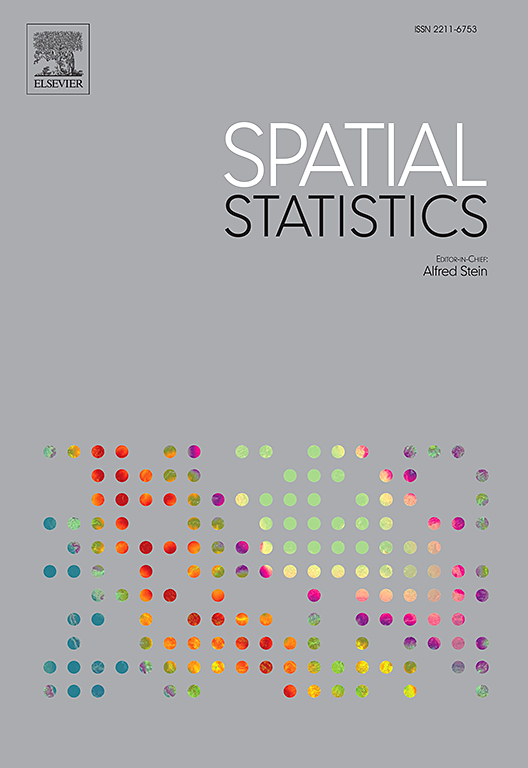Spatio-temporal intensity estimation for inhomogeneous Poisson point processes on linear networks: A roughness penalty method
IF 2.5
2区 数学
Q3 GEOSCIENCES, MULTIDISCIPLINARY
引用次数: 0
Abstract
Nowadays, a vast amount of georeferenced data pertains to human and natural activities occurring in complex network-constrained regions, such as road or river networks. In this article, our research focuses on spatio-temporal point patterns evolving over time on linear networks, which we model as inhomogeneous Poisson point processes. Within this framework, we propose an innovative nonparametric method for intensity estimation that leverages penalized maximum likelihood with roughness penalties based on differential operators applied across space and time. We provide an efficient implementation of the proposed method, relying on advanced computational and numerical techniques that involve finite element discretizations on linear networks. We validate the method through simulation studies conducted across various scenarios, evaluating its performance compared to state-of-the-art competitors. Finally, we illustrate the method through an application to road accident data recorded in the municipality of Bergamo, Italy, during the years 2017–2019.
线性网络上非齐次泊松点过程的时空强度估计:一种粗糙度惩罚方法
如今,大量的地理参考数据与发生在复杂网络约束区域(如道路或河流网络)的人类和自然活动有关。在本文中,我们的研究重点是在线性网络上随时间演变的时空点模式,我们将其建模为非齐次泊松点过程。在此框架内,我们提出了一种创新的非参数强度估计方法,该方法利用基于跨空间和时间应用的微分算子的粗糙度惩罚的惩罚最大似然。我们提供了一个有效的实现所提出的方法,依靠先进的计算和数值技术,涉及线性网络上的有限元离散化。我们通过在各种情况下进行的模拟研究来验证该方法,并与最先进的竞争对手相比评估其性能。最后,我们通过对意大利贝加莫市2017-2019年记录的道路事故数据的应用来说明该方法。
本文章由计算机程序翻译,如有差异,请以英文原文为准。
求助全文
约1分钟内获得全文
求助全文
来源期刊

Spatial Statistics
GEOSCIENCES, MULTIDISCIPLINARY-MATHEMATICS, INTERDISCIPLINARY APPLICATIONS
CiteScore
4.00
自引率
21.70%
发文量
89
审稿时长
55 days
期刊介绍:
Spatial Statistics publishes articles on the theory and application of spatial and spatio-temporal statistics. It favours manuscripts that present theory generated by new applications, or in which new theory is applied to an important practical case. A purely theoretical study will only rarely be accepted. Pure case studies without methodological development are not acceptable for publication.
Spatial statistics concerns the quantitative analysis of spatial and spatio-temporal data, including their statistical dependencies, accuracy and uncertainties. Methodology for spatial statistics is typically found in probability theory, stochastic modelling and mathematical statistics as well as in information science. Spatial statistics is used in mapping, assessing spatial data quality, sampling design optimisation, modelling of dependence structures, and drawing of valid inference from a limited set of spatio-temporal data.
 求助内容:
求助内容: 应助结果提醒方式:
应助结果提醒方式:


